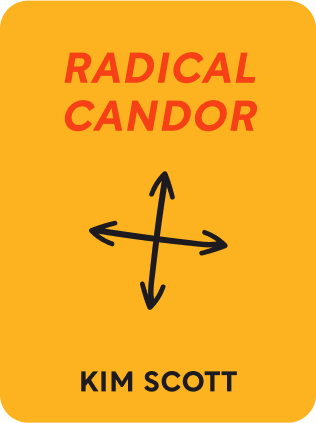

This article is an excerpt from the Shortform book guide to "Radical Candor" by Kim Scott. Shortform has the world's best summaries and analyses of books you should be reading.
Like this article? Sign up for a free trial here .
What is the Radical Candor growth trajectory terminology? How does Kim Scott suggest managing employees who are at different levels?
The Radical Candor growth trajectory model uses a combination of performance and growth to categorize employees. The book also offers strategies for developing employee growth plans with each type.
Keep reading for the five types of employees in the Radical Candor growth trajectory model.
Radical Candor Growth Trajectory Model
The third component of radically candid leadership is effectively managing the growth of your employees using the Radical Candor growth trajectory model. In learning about your team members, you learn more about their goals, their motivations, and the growth trajectory they’re on—this helps you support them in ways that keep them engaged with their work and satisfied with their team. There are five Radical Candor growth trajectory and performance combinations you’ll come across:
High performance with gradual growth: These team members are your “rock stars,” the solid forces who keep things running smoothly. They aren’t looking for significant growth—perhaps because they’re happy with their current position, or other things in their lives are taking their time and energy. Support these team members by recognizing their efforts and thanking them, and by remembering that they deserve stellar performance reviews as much as those who are on rapid growth trajectories and gunning for a promotion.
High performance with rapid growth: These team members are your “superstars,” who want to move up in the ranks and are prepared to dedicate the necessary time and energy to doing so. They’re the results-driven people carrying your team to the next level. Support these team members by keeping them challenged with projects and new responsibilities, and by preparing them to continue moving up in their careers.
Low performance with expected rapid growth: These team members, based on their past track record of high performance, should be excelling and taking on new projects, but are instead falling behind. Support these team members by first considering your management. Perhaps you’ve put this person in a role that doesn’t align with their skills, such as a people person on a numbers-crunching project. Be sure that they’ve received adequate training and clear guidelines. Then, consider them. If they seem to be having problems outside work, give them space to recover. If they’re a poor cultural fit with your organization, it’s best to let them go, rather than keep them in an environment that they’ll always be at odds with.
Mediocre: These team members consistently do okay, but not great, work. It’s crucial to your entire team that you figure out what the path forward should be for a mediocre employee—otherwise, your high-performers will become resentful as they continually pick up her slack. Radically candid conversations will reveal the best way to support her—either let her go so that she can thrive elsewhere, or give her space to get back on track towards high performance on her terms.
Low performance with no growth: When someone is not performing well, and isn’t showing any signs of future improvement, it’s probably best to fire them—doing so allows them to find a different job they’ll thrive in, and your team won’t have the burden of picking up their slack. The Radical Candor growth trajectory model acknowledges that a growth plan may be futile here.
Creating Meaningful Growth Plans
The next part of the Radical Candor growth trajectory model is improve on where your team is. To build meaning into the work of your team members and figure out what growth trajectory they should be on, you need to discuss their goals—this should take place in three parts:
- The life story conversation: This conversation is essential to getting to know your employee personally. Ask about her life story, focusing on changes she made and why these changes were made—it’s often here that you’ll discover her values.
- The dreams conversation: This conversation should help you understand what your employee ultimately wants out of her career and life, and how you can help her get there. It’s important to frame this conversation around dreams because it usually pushes people to name non-work goals, such as, “I want to own a dude ranch in Colorado.” It’s possible that their dreams will be work-related, such as, “I want to retire at 50.” Task her with figuring out the skills she’ll need and rating her own competence in each skill.
- The planning conversation: In this conversation, you should help your employee come up with a solid plan for achieving her dreams. Instead of focusing on telling her how to move up in your organization, focus on finding ways to make her current work clearly translate to preparation for her dreams. This makes her work more meaningful and rewarding. Think of projects that could develop necessary skills, or consider mentors or classes that would be helpful.
When you take time to fully understand who each of your team members are and what their growth looks like, you build a team where everyone feels valued, promotions feel fair, and work feels meaningful—naturally leading to higher motivation and better results.

———End of Preview———
Like what you just read? Read the rest of the world's best book summary and analysis of Kim Scott's "Radical Candor" at Shortform .
Here's what you'll find in our full Radical Candor summary :
- How you have to be direct with people while also caring sincerely for them
- Why relationships are an essential part of successful leadership
- How to create a strong team culture that delivers better results






